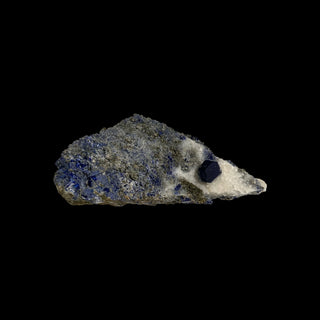
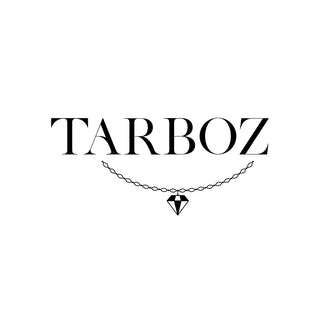
Lapislazuli kaufen bei Tarboz
Lapislazuli - allein der Name lässt erahnen, dass es sich hierbei um einen ganz besonderen Stein handelt. Tarboz bietet Ihnen diesen besonderen Edelstein in verschiedenen Varianten an. Ob Sie sich am Rohedelstein erfreuen möchten oder Lapislazuli Schmuck von besonderer Qualität suchen, die Firma Tarboz ist Ihr erfahrener Partner in Sachen Edelsteine kaufen. Bevor Sie in unserem Online-Shop nach dem für Sie passenden Stein oder Schmuckstück stöbern, laden wir von Tarboz Sie ein, in unserer nachfolgenden Edelsteinkunde mehr über die Geschichte und die Bedeutung des Lapislazuli Edelsteins, seine Farbe und die Verwendung seiner Pigmente zu lernen.
Der Name Lapislazuli
Das Wort Lapislazuli setzt sich aus zwei Worten zusammen. Das Wort Lapis ist aus dem Lateinischen und bedeutet "Stein", Lazuli entstammt der arabischen, genauer gesagt persischen Region und bedeutet "himmelblau". Und so bezeichnet der wohlklingende Name ganz simpel den himmelblauen Stein nach Farbe und Material.
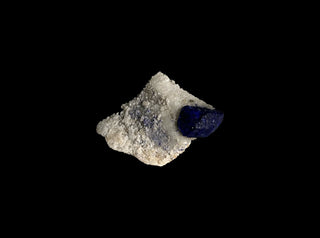

Welchen Farbton hat Lapislazuli?
Der blaue Farbton des Lapislazuli Edelsteins kann von tiefblauem Königsblau bis zu türkisblauem Grün variieren. Abhängig ist die hellere Farbe von im Edelstein enthaltenen Spurenelementen wie beispielsweise Afghanit. Das blaue Lasurit hingegen sorgt für den kräftigen Blauton. Ein Überschuss an anderen Mineralien lässt den Stein türkis erscheinen und mindert daher den Wert.
Bereits im Mittelalter wurde das blaue, aus Afghanistan stammende Lapislazuli Pigment zur Herstellung von Ultramarinblau verwendet, das in der Kunst Verwendung fand. Da natürliches Ultramarin sehr selten war, wurde der blaue Farbstoff seinerzeit sogar mit Gold aufgewogen. Auch Albrecht Dürer wusste um die Wirkung von Ultramarinblau in seinen Werken. Erst später wurden Verfahren entwickelt, um die Farbpigmente des auch Fra Angelico Blau genannten Farbtons künstlich herzustellen.
Geschichte des Lapislazuli
Doch bereits lange vor dem Mittelalter war Lapislazuli für seine Farbe bekannt und wurde vermutlich als erster Edelstein überhaupt als Schmuckstein verwendet. Es gibt Hinweise darauf, dass das edle, blaue Mineral bereits 6000-7000 vor Christus abgebaut wurde. Nicht nur bei den alten Ägyptern wurde der Stein als heilig verehrt. Auch in Mesopotamien, Mexiko und den Reichen des Ostens wurde dem blauen Edelstein eine hohe Bedeutung beigemessen.
Fundorte von Lapislazuli
Die wichtigsten Lagerstätten des Lapislazuli finden sich in der Provinz Badachschan in Afghanistan. In diesen Vorkommen weist der edle Stein auch die beste Qualität auf. Aber auch weitere Fundorte des dunkelblauen Steins in Russland, Iran, Tadschikistan, Chile und Kalifornien sind von Bedeutung für den weltweiten Handel mit Lapislazuli.
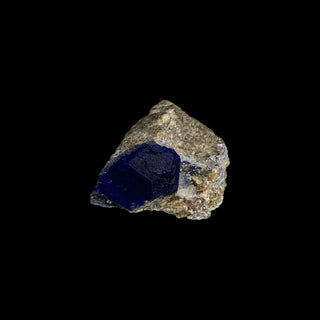

Lapislazuli in der Mythologie
Dem ägyptischen Glauben zufolge ruhte die Erde auf einem gigantischen Lapislazuli, der dem blauen Himmel seine Farbe gab. Skarabäen wurden mit Lapis graviert und repräsentierten die Unsterblichkeit. So war der dunkelblaue Edelstein auch bei den Pharaonen sehr beliebt. Es heißt, dass Kleopatra sich mit einem besonderen Lidschatten in der Farbe Blau schminkte, hergestellt aus dem Pigment des Lapislazuli. Und auch als Heilstein hat der Lapislazuli eine lange Vergangenheit.
Die Esoterik und der Lapislazuli
Dem Lapislazuli Heilstein wird eine Vielzahl positiver Wirkungen nachgesagt. Er findet Anwendung bei
- Hauterkrankungen
- Kopfschmerzen
- Bluthochdruck und
- Depressionen.
Darüber hinaus gilt der Heilstein als Stein der Wahrheit und Freundschaft und soll besonders als Trommelstein das Stirn Chakra, das sogenannte Dritte Auge öffnen.
Ob Edelsteine wirklich eine heilende Wirkung haben, können wir zwar nicht wissenschaftlich belegen, aber dennoch wissen wir um die positive Bedeutung für die Psyche, die Schmuck beim Schenken und auch Tragen bewirkt. Fördern auch Sie Ihr Chakra mit dem Heilstein Lapislazuli. Bei Tarboz finden Sie den vielfältigen Heilstein in unterschiedlichen Formen, natürlich auch als Trommelstein.
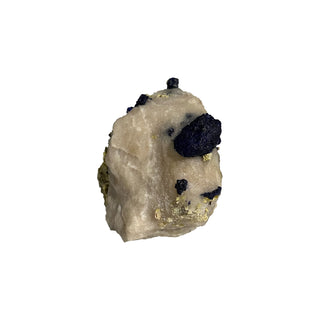

Die Chemie des Lapislazuli
Wie entsteht der blaue Rohstein eigentlich? Metamorphose Vorgänge in unterschiedlichen Gesteinsarten wie
- Marmor
- Gneis
- Amphiboliten und
- Peridotiten
tragen zur Entstehung des Lapislazuli Rohsteins bei. Schwefel, Dolomit und Afghanit sind ebenfalls Bestandteile der Entwicklung des blauen Lapislazuli. Der Edelstein Lapislazuli weist die Bestandteile Lasurit, Pyrit und Calcit auf. Pigmente von Diopsid, Sodalith und andere Mineralien können ebenso im Edelstein gefunden werden.
Auf der sogenannten Mohs-Skala, die die Härte eines Minerals von 1-10 bestimmt, liegt Lapislazuli zwischen 5 bis 5,5 und weist eine Dichte von 2,50 bis 3,00 auf.
Verwechslungsgefahr
Gerade feine, goldfarbene Pigmente von Pyrit weisen auf die Echtheit und Qualität des Steins hin. Hier gilt allerdings, je höher der Anteil von Pyrit und Calcit, desto weniger eignet sich der Stein als Schmuckstein, zumal diese Auswirkungen auf die Farbe haben.
Verwechselt werden kann der Stein mit
- Sodalith
- Lazulith
- Azurith
- Dumortierit.
Im deutschsprachigen Raum existiert eine auf Jaspis basierende Lapisimitation, die als "Deutscher Lapis" oder "Swiss Lapis" vertrieben wurde. Auch einige künstliche Imitationen wurden hergestellt. Im Ultraschallbad oder mit Salmikgeist behandelte Imitationen weisen in der Wirkung Flecken auf, die sich nicht mehr entfernen lassen. Diese Eigenschaft ist bei dem echten Lapislazuli nicht gegeben.
Der größte Lapislazuli
Der größte Lapislazuli der Welt findet sich in Wien. Gegenüber des Kanzleramtes steht der sogenannte Wasserwellen-Lebens-Brunnen. Er wurde aus dem größten jemals gefundenen Lapislazuli-Monolithen aus den chilenischen Anden gefertigt. Der Bildhauer Hans Muhr schuf aus diesem den einzigartigen Brunnen, der erstmals auf der Weltausstellung 1998 in Lissabon ausgestellt wurde und im Jahr 2000 seinen festen Platz in Wien fand.
Die richtige Pflege
Damit Sie lange an Ihrem Lapislazuli Schmuck Freude haben, empfehlen wir von Tarboz Ihnen, dass der Stein nur mit einem weichen, leicht feuchten Tuch poliert wird. Da Lapislazuli nur eine geringe Härte aufweist, kann die Oberfläche schnell verkratzen.
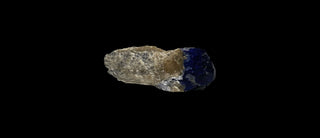

Lapislazuli Schmuck
Ob Halskette, Ohrstecker, Brosche oder in anderer Form, der tiefblaue Lapislazuli Schmuck erweist sich als zeitlos schön. Im Kombination mit Gold, Weißgold und auch Sterling Silber ergeben sich traumhafte Kreationen, die Raffinesse und Eleganz vereinen. Der Stein der Könige und Pharaonen ist auch heute noch ein begehrter Edelstein, der in einer Vielzahl verschiedener Stile, Formen und Designs zu hochwertigem Schmuck verarbeitet wird. Im Cabochon-Schliff zum Beispiel wird das einzigartige Schimmern des Edelsteins besonders gut betont. Als Trommelstein wiederum kommt der blaue Stein als schlichtes Accessoir ebenfalls optimal zur Geltung.
Tarboz bietet Ihnen eine exklusive Auswahl handverlesener Lapislazuli Schmuckstücke. Finden Sie das schönste Geschenk oder belohnen Sie sich selbst mit filigranen Goldschmiedearbeiten, die den facettierten Stein mit all seinen Eigenschaften perfekt zur Geltung bringen. Ebenso können Sie auch den Rohstein bei Tarboz erwerben, und sich entweder an seiner natürlichen Schönheit erfreuen oder aus diesem ein ganz persönliches Schmuckstück herstellen lassen.
Lassen Sie sich beispielsweise beim Juwelier Ihres Vertrauens wundervolle Ohrringe aus echtem Lapislazuli anfertigen. Oder suchen Sie sich in unserem Shop fein gearbeitete Ohrstecker aus, die Sie sowohl im Alltag als auch auf festlichen Veranstaltungen tragen können. Schauen Sie sich jetzt gern in unserem Online-Shop um und wählen den edelsten Lapislazuli Schmuck aus!
